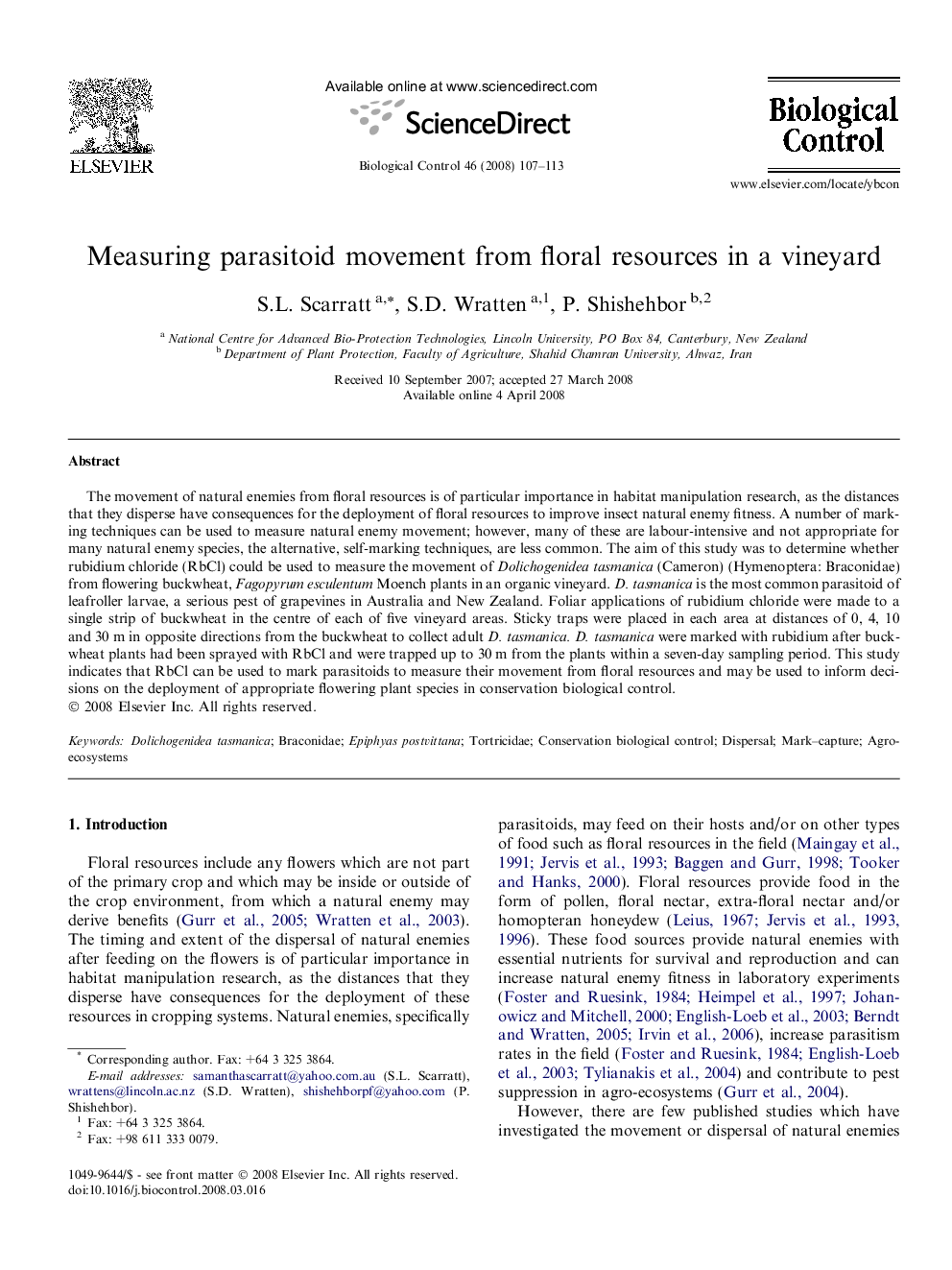| کد مقاله | کد نشریه | سال انتشار | مقاله انگلیسی | نسخه تمام متن |
|---|---|---|---|---|
| 4504935 | 1321118 | 2008 | 7 صفحه PDF | دانلود رایگان |

The movement of natural enemies from floral resources is of particular importance in habitat manipulation research, as the distances that they disperse have consequences for the deployment of floral resources to improve insect natural enemy fitness. A number of marking techniques can be used to measure natural enemy movement; however, many of these are labour-intensive and not appropriate for many natural enemy species, the alternative, self-marking techniques, are less common. The aim of this study was to determine whether rubidium chloride (RbCl) could be used to measure the movement of Dolichogenidea tasmanica (Cameron) (Hymenoptera: Braconidae) from flowering buckwheat, Fagopyrum esculentum Moench plants in an organic vineyard. D. tasmanica is the most common parasitoid of leafroller larvae, a serious pest of grapevines in Australia and New Zealand. Foliar applications of rubidium chloride were made to a single strip of buckwheat in the centre of each of five vineyard areas. Sticky traps were placed in each area at distances of 0, 4, 10 and 30 m in opposite directions from the buckwheat to collect adult D. tasmanica. D. tasmanica were marked with rubidium after buckwheat plants had been sprayed with RbCl and were trapped up to 30 m from the plants within a seven-day sampling period. This study indicates that RbCl can be used to mark parasitoids to measure their movement from floral resources and may be used to inform decisions on the deployment of appropriate flowering plant species in conservation biological control.
Journal: Biological Control - Volume 46, Issue 2, August 2008, Pages 107–113